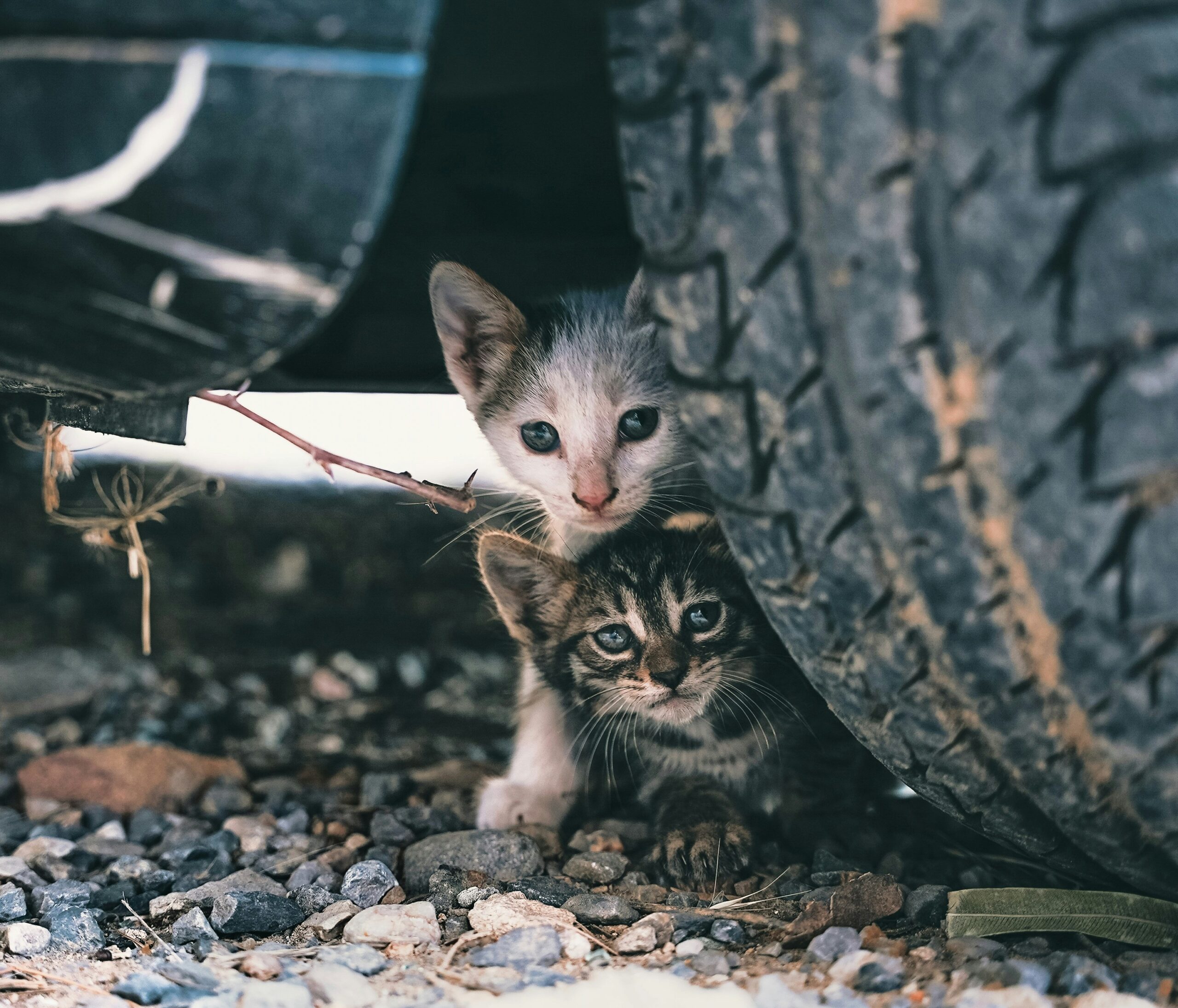You’re walking down the street, and there it is — a tiny stray kitten, all alone, hungry, and scared. Your heart sinks. Should you pick it up? Is the mother nearby? Can you really take care of it?
If these thoughts are racing through your mind, you’re not alone. Many people freeze in this situation. The good news? Helping a stray kitten is not as hard as you might think. A few smart steps can make all the difference.
1. Is the Stray Kitten Truly Abandoned?
Before you act, observe carefully. Not every kitten that appears alone is abandoned.
Check for signs the mother might be nearby:
- The kitten is clean, warm, quiet
- It seems well-fed and calm
In that case, mom might just be out hunting. Step back and watch from a distance for 2–3 hours.
Signs the kitten may actually be abandoned:
- Constant crying
- Dirty, cold, or thin
- Found in dangerous places (roads, garbage piles)
If it’s clearly at risk, it’s time to step in.
2. What You’ll Need to Help a Stray Kitten
Basic items make the process easier:
- Blanket or towel
- Box or carrier
- Gloves (especially for feral kittens)
- Kitten food or formula
- Heating pad or warm bottle (wrapped)
- Litter tray with non-clumping litter
3. Approach Gently — Trust Takes Time
To avoid scaring the kitten:
- Crouch instead of standing tall
- Speak softly
- Offer food before reaching
- If it runs or hisses, don’t chase — try again later with food or ask a shelter for a humane trap
4. Feeding a Stray Kitten Based on Age
Feeding is the biggest challenge. If you’re unsure of age, use a kitten age guide.
Here’s a quick breakdown:
| Age | What to Feed |
|---|---|
| 0–4 weeks | Kitten formula via bottle every 2–4 hrs |
| 4–8 weeks | Wet food mixed with formula |
| 8+ weeks | Solid kitten food and clean water |
Always warm a cold kitten before feeding.
Do a hydration test: pinch the neck skin — if it doesn’t bounce back, the kitten is dehydrated.
5. Hygiene: Clean, But Gently
Most stray kittens need some cleaning — but avoid full baths unless absolutely needed.
To clean:
- Use a warm, damp cloth to wipe dirt
- Remove fleas with a flea comb (no flea meds under 8 weeks)
- Start litter training with a shallow box and soft litter
6. Vet Check = Must-Do Step
Don’t skip this part.
A vet will:
- Treat parasites or infections
- Start vaccines
- Plan spay/neuter (usually after 8 weeks)
Can’t afford it? Call local rescues — many offer help or referrals.
7. Make the Stray Kitten Feel Safe
Kittens need warmth and quiet.
Create a small safe space:
- Soft bedding in a box or crate
- Heating pad on low (wrapped)
- Dim lighting
- No loud noises
Give them space but let your scent (like a sock or shirt) stay nearby.
8. Keep or Rehome — What’s Next?
Option 1: Keep the Kitten
- Continue feeding on schedule
- Visit the vet regularly
- Spay/neuter around 8–12 weeks
- Microchip and ID
Option 2: Rehome Responsibly
- Ask friends, family, local rescues
- Avoid random online ads with no vetting
- Never release it back outside
9. Common Mistakes to Avoid
- Giving cow’s milk (causes stomach issues)
- Bathing a cold/sick kitten
- Ignoring signs of illness like:
- Crusty eyes
- Labored breathing
- No appetite
- Bloated belly
Final Thoughts
Helping a stray kitten doesn’t take magic — it just takes care. Once you learn the basics, you’re not just rescuing a kitten. You’re giving it a second chance at life. Whether you keep it or find it a loving home, you’ve done something truly kind.
More Helpful Guides
🔗 How to Clean a Cat Without Losing an Arm
🔗 What I Can Feed My Cat
🔗 Daily Cat Care Routine for Beginners

